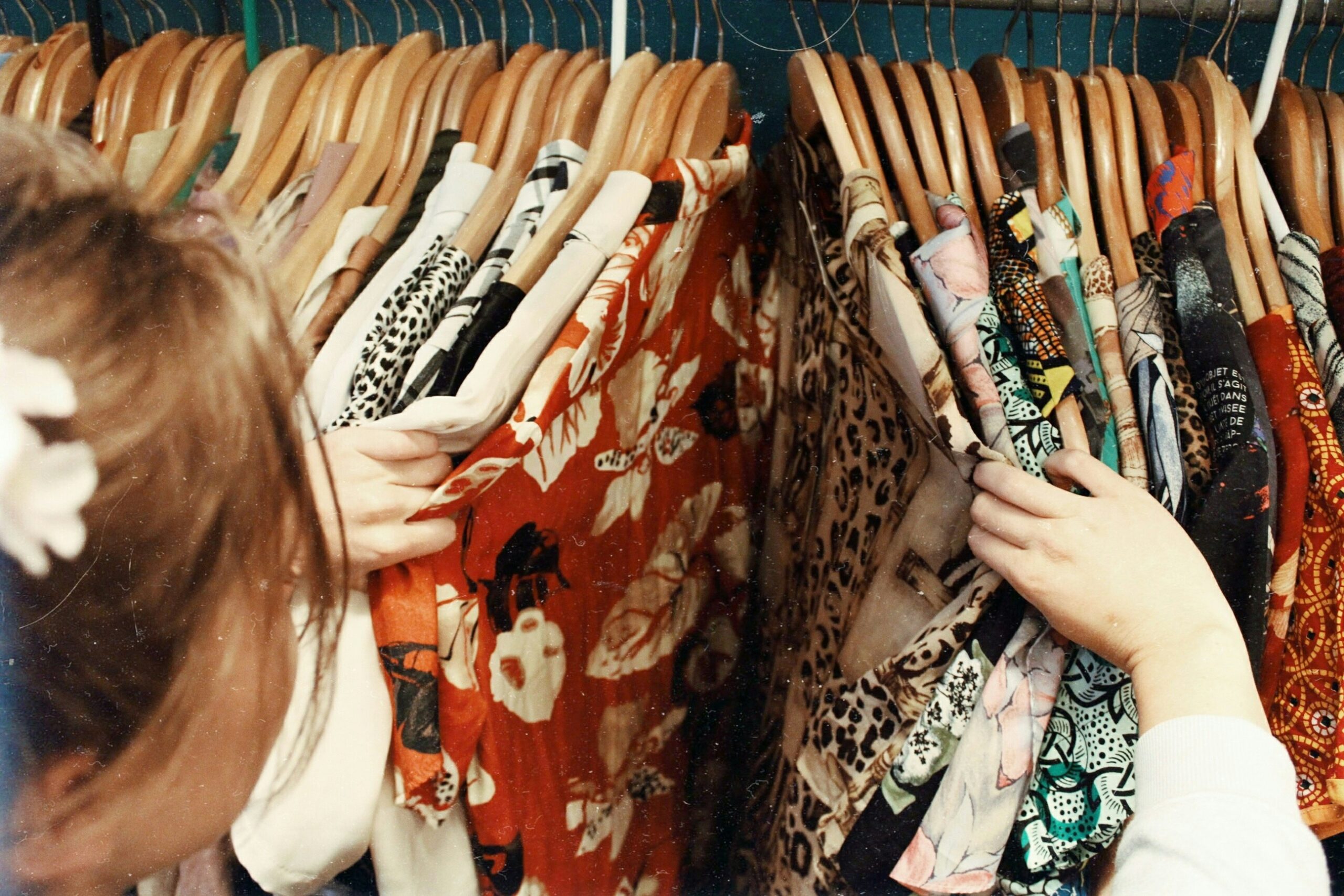
Luxury has a fake news problem.
Since early April, social media has been awash with a flood of viral TikTok videos pushing the notion that some of fashion’s most coveted and costly products are not made in French and Italian ateliers — as Europe’s big luxury brands claim — but at much lower costs in China.
The attacks on luxury’s links to European craftsmanship, a key pillar of the sector’s public image, are tied to Trump’s escalating trade war: Chinese manufacturers have responded to the prospect of sky-high tariffs on their exports to the US with a direct sales pitch to American consumers. The influencers claim to be “exposing” Western brands, offering viewers the chance to buy cut-price Hermès, Chanel and Louis Vuitton dupes from the same factories that they say make the bags to begin with.
Experts say the claims are largely false. Certainly, many European luxury brands do source at least some of the components that go into their products from China, but it’s unlikely their real suppliers would jeopardise these valued relationships by publicly outing them.
That doesn’t seem to matter. Viewers appear to have largely taken the videos at face value, based on comments and follow up posts amplifying the message. On TikTok, the hashtag #ChineseFactory had more than 30,000 posts on April 29. The top posts have hundreds of thousands of views. Many of the initial videos have been taken down, but not before they were duplicated and reshared, often overlaid with commentary repeating the idea that big luxury is, in fact, made in China.
The narrative is particularly dangerous for the industry at a time of slumping sales, when consumers are already questioning the quality and provenance of increasingly costly luxury products. Executives, too, quietly admit luxury’s value proposition has become a problem.
“There’s already a lack of confidence and desirability,” said Isabelle Harvie-Watt, co-founder of Milan-based brand and communications consultancy Anima. “Consumers already don’t perceive value in the bags.”
So far, brands have largely tried to avoid directly engaging with the conversation, a tactic that runs counter to the approach companies are typically advised to take to combat the spread of false information: radical transparency.
“Being honest and open about stuff always makes a difference,” said said Paul Argenti, professor of corporate communication at the Tuck School of Business at Dartmouth. It’s an approach that has worked for many different industries, “thousands of times in lots of different venues.”
But luxury brands have largely stayed silent, mostly declining to even reiterate previous statements saying their products are not made in China — though Hermès did tell The New York Times last week that its bags “were 100% made in France.” French luxury trade groups have quietly circulated a position paper calling for action against “disinformation” and the spread of counterfeits, but it’s yet to be widely publicised. Hermès, Chanel, LVMH and Gucci-owner Kering all either did not respond or declined to comment for this article.
The Silent Treatment
Luxury is not known for transparent communication. The industry is built on skillful myth-making that relies on carefully crafted messaging and tightly controlled narratives. Claims to exceptional quality that help justify increasingly eye-popping prices are often tied to the cultural clout of French and Italian savoir faire.
But an open conversation about how and where luxury products are made may not be a comfortable one for many brands: though luxury labels still trade on the cachet of “Made in Italy” and “Made in France,” in reality their supply chains are often more complex and globalised.
Many brands that still trade on the perception of exclusivity in fact mass-manufacture millions of products per year across an array of categories. Regulation governing “made in” labelling is uneven, often allowing large proportions of a product to be made elsewhere and only finished in the country where it’s officially manufactured to claim a “made in” designation.
In a note published this week, Bernstein analyst Luca Solca recounted seeing crates of sneakers coming in from overseas and “legally labeled ‘Made in Italy,’ because they would be inspected, dusted off, and put in a box in Italy.” This for a “major, highly respected, first class brand,” the note added.
Dana Thomas, whose 2007 book Deluxe was one of the first to peel back the veil on the luxury industry’s operating practices, said she found many companies who staunchly denied manufacturing in China, were in fact producing some handbags in the country.
“They painted themselves in a corner by saying ‘Made in Italy’ confers excellence. It doesn’t,” said Thomas. “We shouldn’t be asking where [a product is] made, but how it’s made. And if it’s made properly, then that’s what should matter.”
When brands have tried to be more transparent, it hasn’t always had the results they may have hoped for. Since raising the price of its classic flap bag to more than $10,000 last year, Chanel has been working to justify the price tag amid reports of declining quality. The strategy has included lifting the lid on its manufacturing process in an effort to spotlight the know-how, expertise and craft that goes into each bag.
In at least one known instance, it’s backfired. At the start of the month, Women’s Wear Daily published a video on social media showing the workings of one of Chanel’s bag factories in France, an accompaniment to a feature on the topic. Rather than admiring the savoir faire on display, many viewers were taken aback by how mechanised the process was. Instead of painstakingly handcrafted bags, the video showed machines doing much of the stitching. Within hours, the video was removed and replaced with photos that showed artisans at work, a switcheroo not lost on commenters.
“Made an oopsie with that first post. Can’t hide that most of the bag is made by machine,” one user wrote. “Total drop in quality and not worth the price.”
Chanel did not respond to a request for comment.
New Media, New Challenges
Perhaps then it is unsurprising that luxury is not directly engaging with the tumult on TikTok. But some experts say the industry hasn’t recognised that the age of misinformation on social media presents brands with new challenges that require a rethinking of the old public relations playbook. Silence worked when brands could keep a handle on the flow of information, but that world doesn’t exist anymore, they say.
These days algorithms that run on engagement are dictating what people see and influencing how they feel about brands and products. Part of the reason why the false narrative around Chinese manufacturing has gained such virality is that it plays into topics that were already on people’s minds. Questions on whether luxury goods are still worth their price tags have been simmering on social media for months.
“It hit critical mass,” said luxury commentator and editor-in-chief of Perfect Magazine, Bryan Yambao, best known by his social media handle Bryanboy. “Even those not in [the fashion] space are being served these videos.” Brands might like to hope their core customers are unlikely to engage in the conversation, but even the world’s wealthiest can be addicted to the scroll. “To say the luxury consumer is not on TikTok is straight up delusional and disconnected from reality,” said Yambao.
Commentators have pointed out that it’s rare for Chinese influencers to speak so directly to Western consumers. In the past, posts that infringe on the intellectual property of large brands have been discouraged by the government. The upsurge in Chinese manufacturing posts over the last few weeks “looks like an orchestrated assault,” Bernstein’s Solca said in a note. The involvement of state-sponsored actors would certainly add a new layer of complexity to the communication challenge facing brands.
To be sure, brands have shrugged off supply chain scandals in the past with almost no impact on the bottom line, but social media has the potential to exponentially magnify reputational harm if a negative narrative takes off.
“In the era of social media, luxury brands — like we all — live in glass houses,” said Bernstein. “Bragging about craftsmanship and artisanal skills, while relying on third party manufacturing (maybe overseas), looks like a recipe for guaranteed reputational damage.”
Disclosure: LVMH is part of a group of investors who, together, hold a minority interest in The Business of Fashion. All investors have signed shareholders’ documentation guaranteeing BoF’s complete editorial independence.








